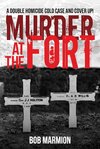PatsFitztrick
Debutant
- Mar 5, 2020
- 61
- 132
- AFL Club
- Carlton
I was unaware of this story, until I picked up this excellent book (published 2016) at my local library.
In 1942, with Australia under threat of invasion by the Japanese, an Australian Army officer had his revolver stolen from a Queenscliff hotel.
Later that year, a soldier stationed at the coastal defence complex at Queenscliff was found shot to death on a nearby country road. Next, a sentry disappeared while on duty on the beachfront at night. A shadowy figure was challenged, but escaped behind a fusillade of shots that wounded another soldier and just missed a third. Four weeks later, the sentry’s body washed up on a beach nearby. It was in astonishingly good condition compared to similar cases, and it was confirmed that the bullets that killed and wounded all three men were fired from the stolen weapon.
During the search for the missing sentry, footprints were found that closely resembled the style of rubber boot worn by Japanese sailors. The soldier that discovered them was immediately transferred into a front-line unit in New Guinea, but he beat the odds and survived the war.
The murder weapon was never found, and no-one has ever been publicly arrested or charged with these crimes. The authorities clamped down on many details of the case, and some important police files have never been released.
In 1942, with Australia under threat of invasion by the Japanese, an Australian Army officer had his revolver stolen from a Queenscliff hotel.
Later that year, a soldier stationed at the coastal defence complex at Queenscliff was found shot to death on a nearby country road. Next, a sentry disappeared while on duty on the beachfront at night. A shadowy figure was challenged, but escaped behind a fusillade of shots that wounded another soldier and just missed a third. Four weeks later, the sentry’s body washed up on a beach nearby. It was in astonishingly good condition compared to similar cases, and it was confirmed that the bullets that killed and wounded all three men were fired from the stolen weapon.
During the search for the missing sentry, footprints were found that closely resembled the style of rubber boot worn by Japanese sailors. The soldier that discovered them was immediately transferred into a front-line unit in New Guinea, but he beat the odds and survived the war.
The murder weapon was never found, and no-one has ever been publicly arrested or charged with these crimes. The authorities clamped down on many details of the case, and some important police files have never been released.






